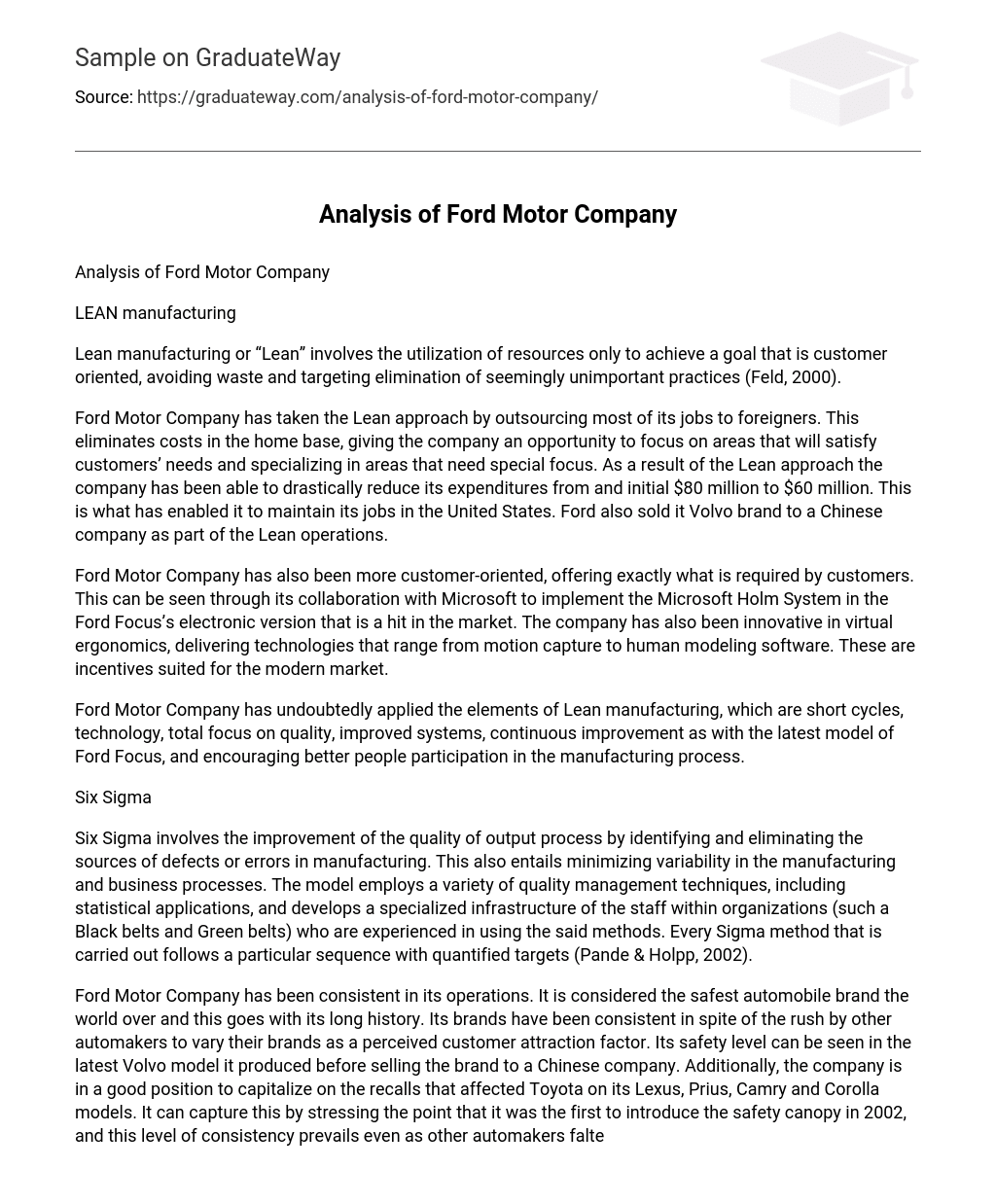Lean manufacturing
Lean manufacturing, or Lean,” involves the utilization of resources only to achieve a goal that is customer-oriented, avoiding waste, and targeting the elimination of seemingly unimportant practices (Feld, 2000).
Ford Motor Company has taken the Lean approach by outsourcing most of its jobs to foreigners. This eliminates costs in the home base, giving the company an opportunity to focus on areas that will satisfy customers’ needs and specialize in areas that need special focus. As a result of the Lean approach, the company has been able to drastically reduce its expenditures from an initial $80 million to $60 million. This is what has enabled it to maintain its jobs in the United States. Ford also sold its Volvo brand to a Chinese company as part of the Lean operations.
Ford Motor Company has also been more customer-oriented, offering exactly what is required by customers. This can be seen through its collaboration with Microsoft to implement the Microsoft Holm System in the electronic version of the Ford Focus, which is a hit in the market. The company has also been innovative in virtual ergonomics, delivering technologies that range from motion capture to human modeling software. These incentives are suited for the modern market.
Ford Motor Company has undoubtedly applied the elements of Lean manufacturing, which include short cycles, technology, a total focus on quality, improved systems, continuous improvement, as seen in the latest model of the Ford Focus, and encouraging better participation from people in the manufacturing process.
Six Sigma
Six Sigma involves improving the quality of the output process by identifying and eliminating sources of defects or errors in manufacturing. This also entails minimizing variability in manufacturing and business processes. The model employs a variety of quality management techniques, including statistical applications, and develops a specialized infrastructure of staff within organizations (such as Black Belts and Green Belts) who are experienced in using these methods. Every Sigma method that is carried out follows a particular sequence with quantified targets (Pande & Holpp, 2002).
Ford Motor Company has been consistent in its operations. It is considered the safest automobile brand in the world, and this is due to its long history. Its brands have remained consistent despite other automakers rushing to vary their brands as a perceived customer attraction factor. Its safety level can be seen in the latest Volvo model it produced before selling the brand to a Chinese company. Additionally, the company is in a good position to capitalize on the recalls that affected Toyota on its Lexus, Prius, Camry, and Corolla models. It can capture this by stressing the point that it was the first to introduce the safety canopy in 2002. This level of consistency prevails even as other automakers falter in safety standards. Ford Motor Company was also the first automaker to install a standard trunk release system in 1999, setting a benchmark for other automakers to follow. This means that the company’s experienced staff have remained ambitious in delivering to the customer, despite the tumultuous times experienced by the company.
References.
Feld, W. M. (2000). Manufacturing: Tools, Techniques, and How to Use Them, Volume 2000. New York: CRC Press.
Pande, P. S. & Holpp, L. (2002). What is Six Sigma? New York: McGraw-Hill Professional.





